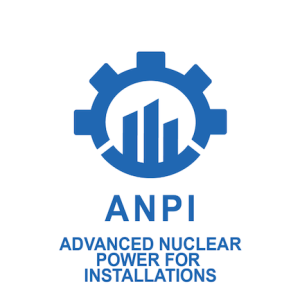A new study by LucidCatalyst for the US Department of Energy’s (DOE’s) ARPA-E MEITNER programme said advanced reactors that cost less than $3000/kW will be attractive investments, and create the most value for plant owners.
The 90-page report, “Cost and Performance Requirements for Flexible Advanced Nuclear Plants in Future US Power Markets”, examines two future scenarios for four independent system operators (ISOs) in 2034. These were:
- A low renewables baseline scenario, assuming continuation (and eventual expiration) of existing renewables policy.
- A high renewables scenario based on National Renewable Energy Laboratory (NREL) Regional Energy Deployment System low renewables and natural gas costs.
These scenarios were modelled across four principal US power markets: ISO-New England; Pennsylvania, Jersey, Maryland Power Pool; Midcontinent Independent System Operator; and California ISO.
The study found that, by modelling high penetrations of renewables in the mid-2030s following NREL scenarios, advanced reactors can complement wind and solar. Together, these technologies drive down costs, reduce emissions, and improve performance in future US electricity grids. In each of the markets modelled, the addition of advanced reactors lowered the overall system cost.
LucidCatalyst managing director Eric Ingersoll said: “Delivering plants for less than $3000/kW requires meaningful cost reduction in all systems and components, and all aspects of the plant delivery process. Key strategies include reuse of designs, high productivity manufacturing, and separation of the nuclear safety case from the balance of plant.”
Noting that advanced reactors can supply clean dispatchable power without raising the overall cost of electricity, he said this conclusion should motivate independent system operators, public utility commissioners, policymakers, utilities, and other stakeholders to investigate the role these products could play in future grids, and to continue and increase their support for acceleration of advanced reactor commercialisation efforts.
He added: “This study should also motivate organisations responsible for national and international energy modelling to include flexible, advanced nuclear with thermal energy storage in their projections for future energy systems.”
Rachel Slaybaugh, Director of the ARPA-E MEITNER Programme, said: “Advanced reactor developers are at various stages of commercialising new products, with an opportunity now to integrate identified future market requirements into early stages of their designs. Studies like this can provide these reactor design teams with information allowing them to make evidence-based decisions with a realistic understanding of future requirements in large markets, helping demonstrate the compelling growth potential for the future of advanced reactor technology.”
Insights and recommendations from the study
Key Insights from the study include:
- Advanced reactors that cost less than $3000/kW will be attractive investments for owners.
- There will be large markets for advanced reactors that cost less than $3000/kW.
- Flexible advanced reactors complement wind and solar in markets with high penetrations of renewables.
- Flexible advanced reactors can enable high penetrations of variable renewables in future energy systems.
- Together, renewables plus advanced nuclear (with thermal energy storage) lower overall system costs, reduce emissions, and improve performance in future US electricity grids.
- In all of the markets modelled, adding advanced reactors lowered overall system cost.
- Stakeholders should investigate the role that these products could play in grids of the future and support advanced reactor commercialisation.
Recommendations include:
- Only by designing to clear cost and performance targets will reactor developers succeed in delivering large-scale market transformation. Flexibility (without storage) may be good for the grid but may not benefit a plant’s revenue. Nuclear power plants inherently want to run at their maximum rated output. Making flexibility economic for nuclear producers will require either the inclusion of energy storage system or major market reforms.
- Delivering plants for less than $3000/kW requires meaningful cost reduction in all systems and components, and all aspects of the delivery process. Key strategies include standardisation and reuse of designs, and separation of the nuclear island safety case from the rest of the plant to enable use of off-the-shelf balance of plant.
LucidCatalyst says it “is an international consultancy specialising in thought leadership and strategic interventions designed to bring about rapid decarbonisation and prosperity for all”.
The Advanced Research Projects Agency-Energy (ARPA-E) aims to empower US energy researchers with funding, technical assistance, and market readiness. In 2005, leaders from both parties in Congress asked the National Academies to "identify the most urgent challenges the US faces in maintaining leadership in key areas of science and technology”. In 2009, ARPA-E received its first appropriations of $400 million, which funded its first projects.
The projects that comprise ARPA-E's MEITNER (Modelling-Enhanced Innovations Trailblazing Nuclear Energy Reinvigoration) programme seek to identify and develop innovative technologies that can enable designs for lower cost, safer advanced nuclear reactors.
In May, ARPA-E announced $27 million in funding for nine projects as part of the Advanced Research Projects Agency-Energy’s (ARPA-E) Generating Electricity Managed by Intelligent Nuclear Assets (GEMINA) programme. These projects will work to develop digital twin technology for a tenfold reduction in operations and maintenance costs in advanced reactors.






